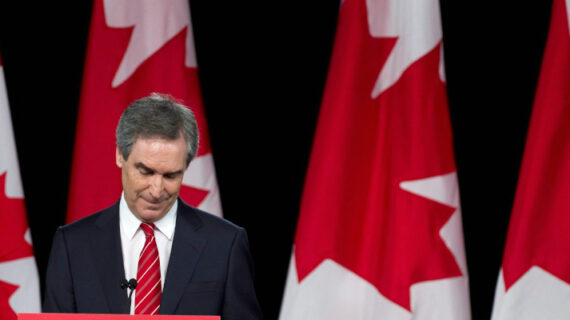The CRTC has raised some hackles with an innocuous-looking “Myths and Facts” explainer on the Online Streaming Act (formerly Bill C-11), which recently received Royal Assent after a bumpy two-year road to enactment. The CRTC explainer’s copy could have been lifted from one of Heritage Minister Pablo Rodriguez’s press conferences, casually eliding some of the real sticking points of the bill, which even domain experts are confused about.
One allegation that the government still has yet to answer to it is how tasking the CRTC with a mandate to regulate platforms does not amount to regulating the creators who rely on those platforms to disseminate their content. (It doesn’t help that an amendment intended to shield user-generated content from regulation proposed by the Senate was promptly scrubbed out when the bill returned to the House of Commons.) Yet, right in the first “myth” addressed the CRTC repeats this doublespeak: “We will only regulate broadcasters, including providers of both traditional broadcasting services and online streaming services.” But you can’t regulate platforms without also regulating the content creators who publish on them. One way or another, C-11 empowers the government to wield a direct hand in the content we consume.
The future of what life looks like under the Online Streaming Act is a question of how the CRTC will conduct itself since all of the nuts and bolts of implementation have been left to the regulating body and Cabinet, which will create a policy framework to guide it. The bill delegates the ability to define what Canadian and Indigenous content is, “conditions of service” for online services, and to host consultations on “who should contribute, how much, and how.” Suffice it to say that there will be a long and tedious path ahead before we have a sense of how C-11 will actually function.
Broadly, there are two possible futures under C-11 that we can imagine, one humdrum and probable and the other disquieting and less likely.
The first is that the CRTC’s projected timeline of nine rounds of consultations over the next three years will be dominated by legacy media groups who possess both the budget and organizational heft to dedicate to multiple trips sitting in stuffy committee rooms in Gatineau, with occasional piping-in of smaller creators. They will conclude with milquetoast platitudes about the importance of diversity, representation, and accessibility. Sensitive to the controversy surrounding the bill and accusations of ideological bias, the CRTC will regulate with a light touch.
Still, by 2026 your YouTube home feed will become peppered with glossy yet suspiciously on-the-nose campaigns promoting diversity, intersectionality, and whatever other zeitgeisty terms du jour fit into the Canadian bureaucratic apparatus’ self-concept. Individual creators will occasionally get some attention for pointing out suspicious irregularities in their stats and views, but because big tech platforms Google and Facebook opt to mostly play ball with the CRTC, C-11 will live as something like maple-leaf red tinted glasses on an otherwise normal digital landscape.
The second, admittedly less likely but certainly not impossible scenario, is more ominous. The same legacy-media-dominated consultations take place. The CRTC is energized and influenced by its expanded mandate as well as the government’s clear vendetta against Big Tech and zest for regulation in the name of combatting “misinformation”. It opts to flex its muscle with a thick conception of Canadian content that clearly prioritizes government-friendly messages and sets out to enhance the discoverability of only that content that fits within its ideological priors. Edgier Canadian creators like Gad Saad and Jordan Peterson are effectively shadow-banned. After all, discoverability is a zero-sum game, and content can only be prioritized at the expense of demoting other content. Even less polarizing figures like Hub Dialogues guest J.J. McCullough become harder and harder for new audiences to find.

Unfortunately, there is some evidence that the CRTC decision-makers bear some heavy-handed impulses, beyond their evasive communiqué.
Take, for example, the CRTC’s decision to consider a complaint from EGALE that has asked that Fox News be removed from a list of foreign broadcasters approved for carriage on cable. In its open letter, the LGBTQ advocacy group cited inflammatory and offensive comments made by the now-departed Tucker Carlson on his “famously incendiary” program.
And since the CRTC takes its directives, formally and informally, from the government, the Liberals’ posture and increasing proclivity for censorship are relevant to consider as well. On this front, a recent Parliamentary Question asked by Conservative MP Dean Allison reveals a distinctly muzzled modus operandi. Over the last three years, government has made over 200 attempts to silence social media, including one centred on Sun columnist Lorne Gunter’s reporting on a new proposal at the Immigration and Refugee Board to allow refugee claims based on grounds of “intersectionality.” Gunter was critical of the proposal, arguing that it would allow a wooly and lax standard for would-be refugees. Whatever you think of that argument, it’s undeniably creepy to read that as a result of it, the IRB approached Facebook and Twitter, demanding that the column be taken down because it risked “undermining public confidence in the independence of the Board.”
Neither are concomitant with innovation and growth in the Canadian digital landscape. As we wait and see what C-11 reality we are entering into, be vigilant about what you see in your timelines.




